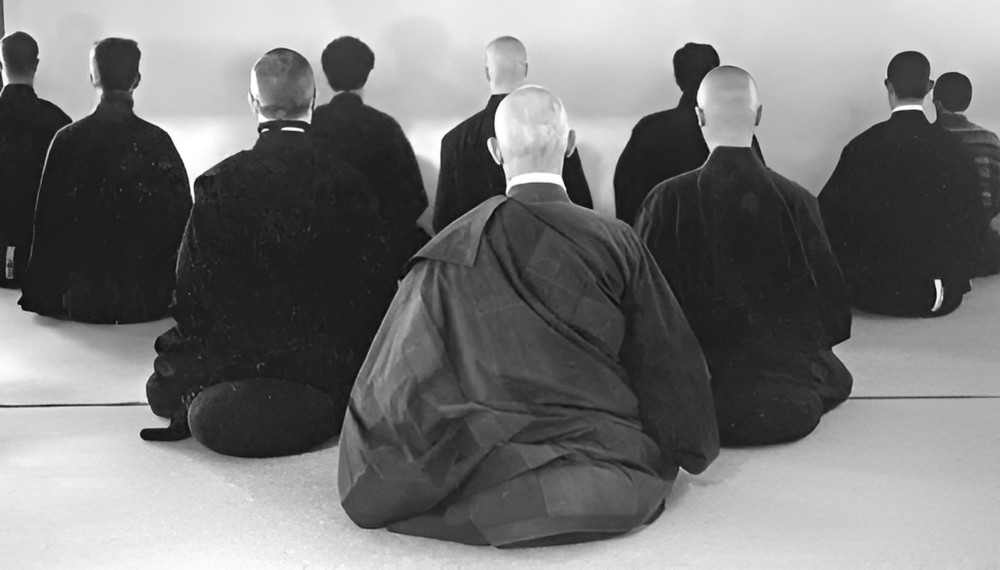Zen meditation is an ancient Buddhist tradition that dates back to the Tang Dynasty in 7th century China. From its Chinese origins it spread to Korea, Japan and other Asian lands where it continues to thrive. The Japanese term “Zen” is a derivative of the Chinese word Ch’an, itself a translation of the Indian term dhyana, which means concentration or meditation.
- What does Zen mean?
- What is Zen Buddhism?
- Is Zen a Religion?
- Zen Meditation Garden
- Daily Zen Meditation
- How to start your Meditation Journey
- How to do Zen Meditation at Home
- Zen Walking Meditation
- Zen Symbol
- How to be more Zen?
- Zen meditation clothing
What does Zen mean?
The word “Zen” is widely used in design, popular culture, the commercial world, and everyday life but the true meaning of “Zen” got lost.
Pure Zen is difficult to explain. It simply means to be completely alive. Alive right now and be concerned with what actually is rather than what we think or feel about what is.
Real Zen in its essence is the art of seeing into the nature of one’s own being, and it points the way from bondage to freedom.
What is Zen Buddhism?
- The essence of Zen Buddhism is achieving enlightenment by seeing one’s original mind (or original nature) directly; without the intervention of the intellect.
- The key to liberation in Zen is simply self-knowledge.
- To be a human being is to be a Buddha. Buddha nature is just another name for human nature – true human nature.
- Zen tries to free the mind from the slavery of words and the constriction of logic.
- The central concept of Zen is meditation.
Is Zen a religion?
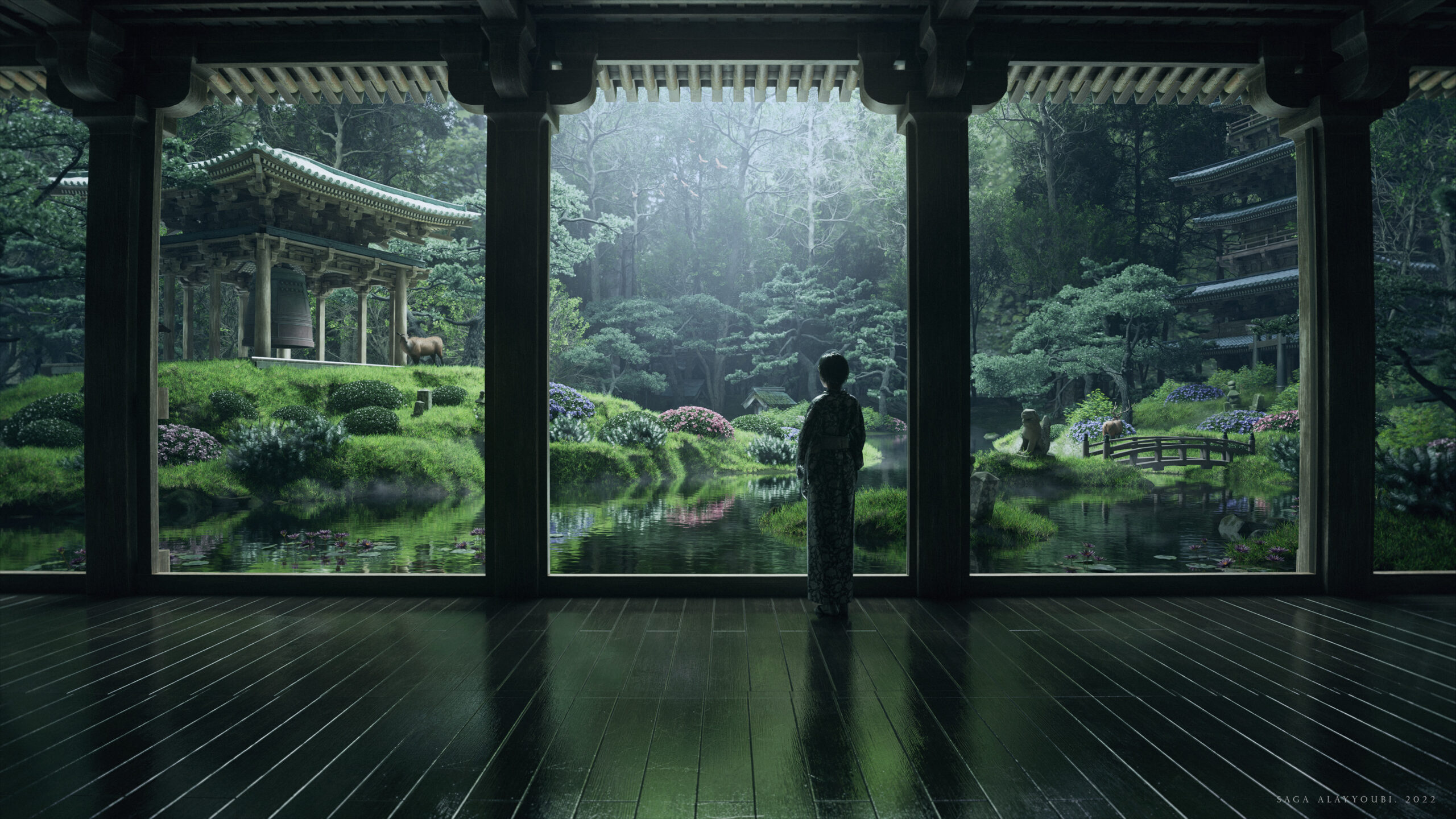
Zen is short for Zen Buddhism. It is sometimes called a religion and sometimes called a philosophy.The essence of Zen is meditation, actual practice to explore the depth of your mind.
However, Zen in its purest form, is not a theory, an idea, or a piece of knowledge. It is not a belief or dogma; but rather, it is a practical experience. The essence of Zen is meditation, actual practice to explore the depth of your mind.
Zen is not a moral teaching, it does not require one to believe in anything. A true spiritual path does not tell people what to believe in; rather it shows them how to think; or, in the case of Zen – what not to think.
Zen Buddhism teaches that there is nothing to rely upon but one’s true self. Everyone has the Buddha-nature and the potential to become a Buddha, and yet it is hidden because of our illusions.
Zen practice is dialogic, interactive, “together practice.” In a formal Zen meal, for instance, everyone starts and ends together. In Zen walking meditation, everyone walks together. Sitting meditation or Zazen is done side by side, in a hall, with each period of meditation starting and ending with everyone together.
Zen Meditation Garden
Zen Meditation Gardens have been an integral part of Japanese culture for over ten centuries, deeply rooted in the country’s rich history and spiritual traditions. These serene and meticulously crafted spaces were originally designed as sanctuaries for monks, providing them with an ideal environment for meditation and reflection upon the profound teachings of the Buddha.
Zen Gardens are not merely spaces adorned with carefully placed rocks, gravel, and vegetation; they are profound expressions of the Zen philosophy. These gardens symbolize the principles of simplicity and self-discipline, reminding individuals of the importance of shedding distractions and worldly possessions to attain inner peace. As one strolls through a Zen Meditation Garden, they are encouraged to engage in mindful contemplation, seeking to connect with their true self and transcend the noise of daily life.
The essence of Zen Gardens lies in their ability to evoke a sense of tranquility and spiritual harmony. Each element within the garden, from the raked gravel to the precisely positioned stones, serves as a metaphor for life’s journey and the quest for enlightenment. In a world often characterized by complexity and constant stimulation, Zen Gardens offer a timeless refuge, inviting individuals to pause, breathe, and embark on their own inner journey toward self-discovery and enlightenment.
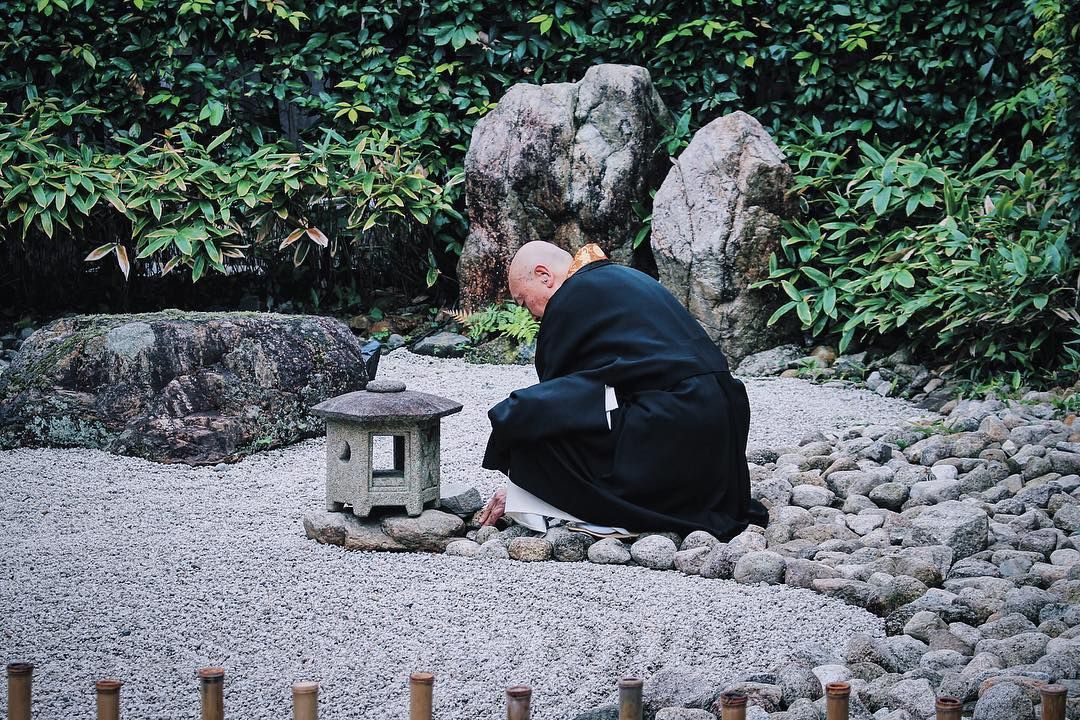
Daily Zen Meditation
Trying to explain or define Zen Meditation or Zazen, by reducing it to a book, to a few definitions, or an article is almost impossible.
Zazen, a form of seated meditation, is at the very heart of Zen practice. In fact, Zen is known as the “meditation school” of Buddhism.
Rather than offering temporary solutions to life’s problems, Zen meditation looks to address core issues.
To experience it, one needs meditation. An ordinary mind can only know ordinary concepts and ideas. If one wants to understand and experience extraordinary experiences and ideas, one has to have an extraordinary mind. An extraordinary mind comes about through concentration.
There is no object in zen meditation, its objectless meaning you don’t focus on anything specific.
There are no stages of progress in Zen Meditation. There is a story about Seigen Gyoshi – a Zen Buddhist monk during the Tang Dynasty. He went to the Sixth Ancestor and asked, “How can I avoid falling into steps and stages?” And the Ancestor said, “What have you been practicing?” Seigen said, “I haven’t even been practicing the Four Noble Truths [that is, I haven’t even started the beginning practice].” And the Ancestor said, “Well, what stage have you fallen into?” And Seigen said, “How could I have fallen into a stage if I haven’t even practiced the Noble Truths?”
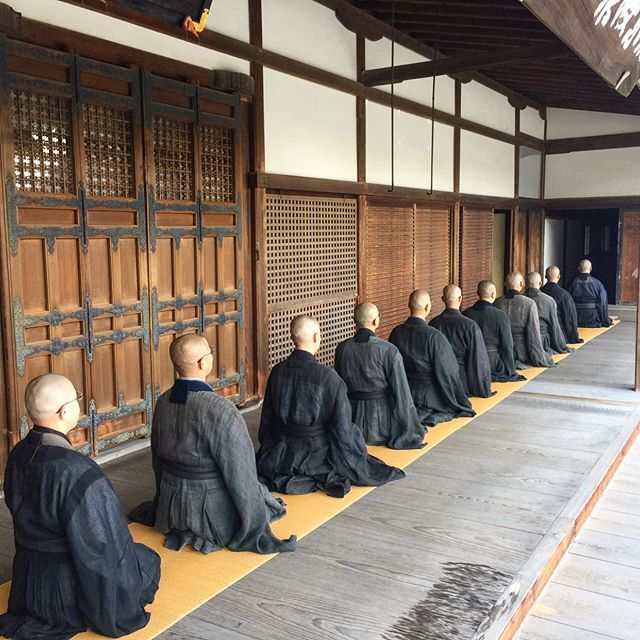
Zen teachers say that if you miss the moment, you miss your life. How much of our lives have we missed? Be mindful!
Zen Buddhism Quotes
How to start your Meditation Journey
Starting your Zen Meditation journey is a simple yet profound process.
Step 1: Begin by finding a place free from distractions, allowing yourself to fully immerse in the practice.
Step 2: Pay attention to your body posture, as it directly influences your state of mind and breathing. You can choose the lotus or half-lotus position or simply sit on a chair. Ensure your back remains straight and centered, enabling your diaphragm to move freely and your mind to find stability. An upright spine facilitates deep, natural breathing.
Step 3: Position your hands with the left resting in the right, thumbs aligned and lightly touching, while the edges of both hands touch the lower abdomen.
Step 4: Maintain proper alignment by pulling in your chin, stretching the back of your head, aligning your nose with your navel, and keeping your shoulders relaxed. Close your mouth, rest the tip of your tongue against the palate, and relax your jaw. Half-close your eyes, allowing your gaze to naturally fall to the ground in front of you.
Step 5: Once comfortably settled in your meditation posture, focus on your breath. Breathe through your nose and fully immerse yourself in the simple sensation of breathing. Initially, count each inhalation and exhalation, starting from one and counting up to ten. Inhale, count one; exhale, count two, and so on. If you maintain proper posture and let your breath become deep and peaceful, your mind will follow suit, expanding into a state of tranquility and serenity.
The mind is like the surface of a pond—when the wind is blowing, the surface is disturbed, there are ripples, and sediment from the bottom is stirred. It’s difficult to see beneath the surface even though the water is, by its very nature, clear and pure.
How to do Zen Meditation at Home
Practicing Zen meditation at home can be a deeply rewarding experience, allowing individuals to cultivate mindfulness, inner peace, and a profound connection with the present moment. While traditional Zen meditation often takes place in temples or meditation centers, it’s entirely possible to bring the essence of this practice into your own living space.
Here are three Zen techniques that can be practiced at home:
1. Observation of the Breath: To begin, find a quiet and comfortable space in your home. You can assume a seated posture on a cushion or chair, adopting positions like Burmese, half-lotus, or Seiza. The focus of this meditation is on the breath, particularly its natural rhythm in the belly area. As you breathe in and out, maintain unwavering awareness of each breath. The objective is not to control the breath but to observe it attentively. This practice cultivates a deep sense of presence and alertness, anchoring you firmly in the here and now.
2. Quiet Awareness (Shikantaza): Another powerful Zen meditation technique that can be practiced at home is “just sitting” or shikantaza. Unlike the breath-focused meditation, shikantaza does not rely on a specific object of meditation. Instead, it encourages meditators to allow thoughts to flow through their minds without judgment, attachment, or rejection. In shikantaza, you simply sit and let your mind be, understanding that there is no goal or specific outcome to achieve. The practice itself is the end, and it offers a profound opportunity to embrace the present moment in its purest form.
3. Intensive Group Meditation (Sesshin): While intensive group meditation is typically associated with Zen meditation centers, you can create your own version of it at home if you have a dedicated meditation space. In a sesshin, practitioners commit to extended periods of meditation, often lasting 30 to 50 minutes, interspersed with walking meditation, short breaks, and mindful meals. Silent mealtimes, using oryoki bowls, are an integral part of this practice. Brief periods of mindful work may also be included. Although traditionally practiced in temples, sesshin-like retreats are now held in various parts of the world, allowing practitioners to deepen their meditation experience and sense of community.
Incorporating these Zen techniques into your daily routine can help you establish a consistent meditation practice at home. Remember that the essence of Zen meditation lies in the dedication to mindfulness, the acceptance of the present moment, and the gradual journey toward inner clarity and enlightenment, all of which can be nurtured in the comfort of your own home.
Zen Walking Meditation
Zen walking meditation, known as Kinhin, is a contemplative practice that complements the seated meditation of Zazen in Zen Buddhism. It involves walking slowly and mindfully in a prescribed pattern, typically in a circular or straight path. Kinhin is a way to extend mindfulness and presence into daily activities, making it an integral part of Zen practice.
To do Zen walking meditation, find a quiet and spacious area to walk in, preferably without distractions. Begin by standing upright with your hands relaxed by your side. Take a deep breath and as you exhale, step forward with your right foot. The pace is intentionally slow, with each step corresponding to one breath cycle.
Pay close attention to your posture, ensuring your back is straight, your gaze is focused a few feet in front of you, and your movements are deliberate and balanced. As you walk, synchronize your breath with your steps, inhaling as you lift your foot and exhaling as you place it down. The key is to maintain full awareness of each moment of the walking process, cultivating mindfulness and presence with every step. When you reach the end of your path, pause briefly, breathe, and turn around mindfully to continue walking in the opposite direction. Zen walking meditation can be a powerful practice for grounding oneself in the present and calming the mind.
Zen Symbol
The Zen symbol known as the Enso, a simple yet profound circle traditionally drawn with a single, fluid brushstroke, encapsulates a wealth of philosophical and spiritual concepts. This iconic circle represents a multitude of ideas, from the cyclical nature of karma and samsara—the never-ending circle of life—to the stark reminder of impermanence in all things.
Within its encompassing curve lies the ultimate aspiration of Zen practice: the attainment of absolute liberation from the ceaseless cycle of existence, signified by the concept of Nirvana. Furthermore, the Enso embodies the notion of continuity in life, with its brushstroke commencing, flowing, and eventually completing, much like the unfolding journey of our own existence. It serves as a visual and contemplative reminder of the ever-evolving, interconnected nature of life, inviting individuals to embrace the present moment and find profound wisdom within the simplicity of a circle.
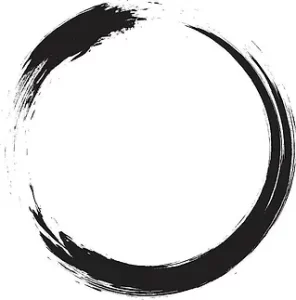
How to be more Zen?
1. Perform every task slowly and deliberately, focusing your mind entirely on the current task. Refrain from moving on to the next task until you’ve completed the current one. Doing less allows you to execute each task more slowly, with greater thoroughness and concentration.
2. Dedicate time to sitting in meditation. In the daily routine of a Zen monk, sitting meditation (zazen) holds paramount importance. You can apply the same principle to any activity, as long as you engage in it regularly and practice being fully present.
3. Engage in acts of service. Zen monks allocate a portion of their day to serving others, whether it be fellow monks within the monastery or people in the broader community. This practice instills humility and ensures that their lives are not solely self-centered but dedicated to the well-being of others.
4. Reflect on what is essential and live a life of simplicity.
A Zen monk’s existence is characterized by its minimalism, containing only what is truly necessary. They don’t amass closets full of shoes or chase after the latest fashion trends. This serves as a reminder that many aspects of our lives are superfluous, prompting us to contemplate our genuine needs and the value of possessions that fall beyond necessity.
Zen is not some kind of excitement, but concentration on our usual everyday routine.”
– Shunryu Suzuki
Zen meditation clothing
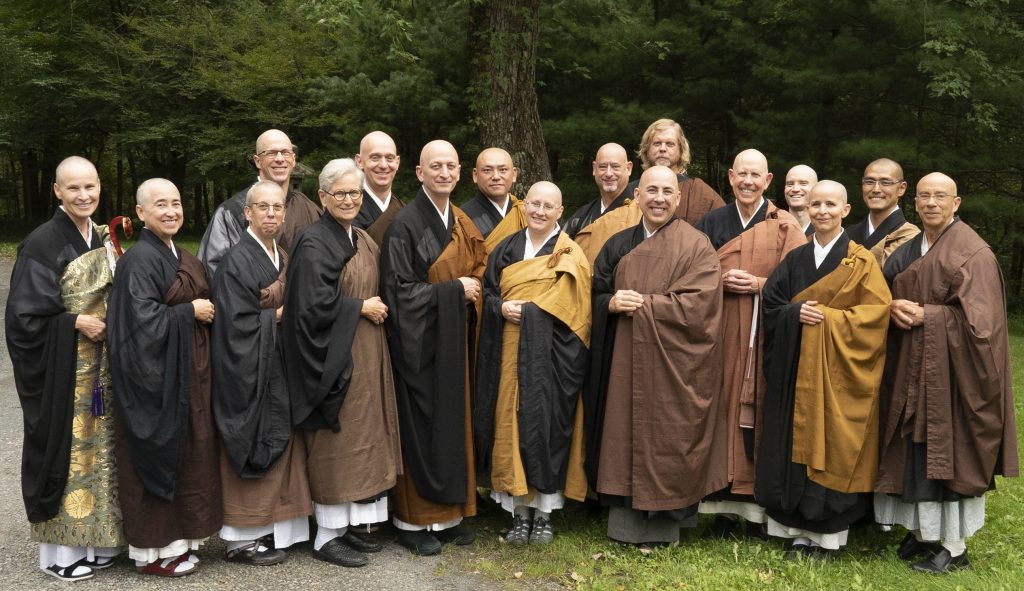
Zen meditation clothing, often characterized by its simplicity and comfort, is carefully chosen to facilitate a distraction-free meditation experience. Practitioners typically opt for loose-fitting, neutral-colored garments that allow for ease of movement while maintaining modesty and modesty, promoting a sense of focus and tranquility. These clothing choices prioritize comfort and mindfulness, minimizing any physical discomfort or distractions during meditation sessions. In many cases, traditional Zen practitioners wear robes as a symbol of their commitment to simplicity and humility, underscoring the idea that meditation transcends material concerns, allowing one to delve deeper into the realms of inner peace and self-discovery.
Are you looking for a tool that can help you start or advance in your meditation practice? Here is the solution – #1 Mindfulness Journal – My Meditation Marathon. Get it today with a 20% discount using this link → HERE

